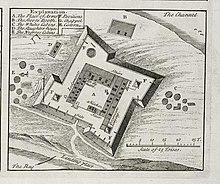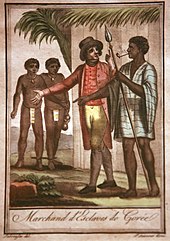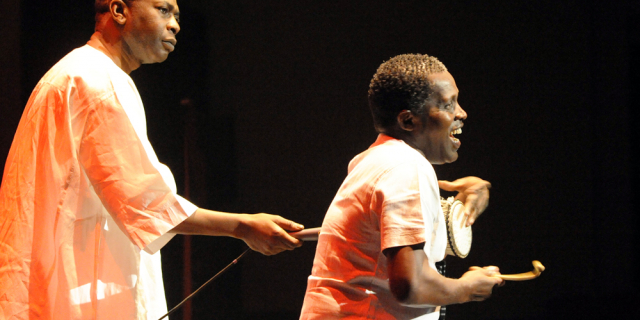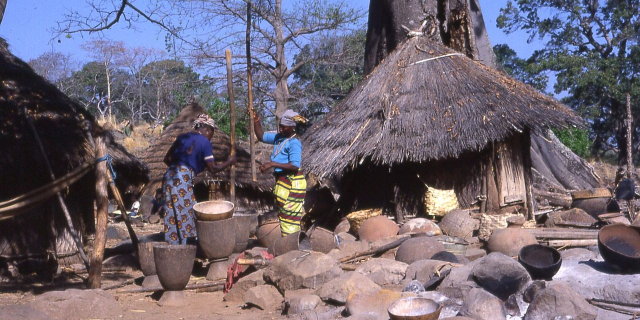Senegal
Context of Senegal
Senegal, officially the Republic of Senegal, is a country in West Africa, on the Atlantic Ocean coastline. Senegal is bordered by Mauritania to the north, Mali to the east, Guinea to the southeast and Guinea-Bissau to the southwest. Senegal nearly surrounds the Gambia, a country occupying a narrow sliver of land along the banks of the Gambia River, which separates Senegal's southern region of Casamance from the rest of the country. Senegal also shares a maritime border with Cape Verde. Senegal's economic and political capital is Dakar.
Senegal is notably the westernmost country in the mainland of the Old World, or Afro-Eurasia. It owes its name to the Senegal River, which borders it to the east and north. The climate is typically Sahelian, though there is a rainy season. Senegal covers a land area of almost 197,000 square kilometres (76,000 sq mi) an...Read more
Senegal, officially the Republic of Senegal, is a country in West Africa, on the Atlantic Ocean coastline. Senegal is bordered by Mauritania to the north, Mali to the east, Guinea to the southeast and Guinea-Bissau to the southwest. Senegal nearly surrounds the Gambia, a country occupying a narrow sliver of land along the banks of the Gambia River, which separates Senegal's southern region of Casamance from the rest of the country. Senegal also shares a maritime border with Cape Verde. Senegal's economic and political capital is Dakar.
Senegal is notably the westernmost country in the mainland of the Old World, or Afro-Eurasia. It owes its name to the Senegal River, which borders it to the east and north. The climate is typically Sahelian, though there is a rainy season. Senegal covers a land area of almost 197,000 square kilometres (76,000 sq mi) and has a population of around 17 million. The state is a unitary presidential republic; since the country's foundation in 1960, it has been recognized as one of the most stable countries on the African continent.
The state was formed as part of the independence of French West Africa from French colonial rule. Because of this history, French is the official language, but it is understood only by a minority of the population. Over 30 languages are spoken in Senegal, and Wolof is the most widely spoken one, with 80% of the population speaking it as a first or second language, acting as Senegal's lingua franca alongside French. Like other post-colonial African states, the country includes a wide mix of ethnic and linguistic communities, with the largest being the Wolof, Fula, and Serer people. Senegalese people are predominantly Muslim.
Senegal is classified as a heavily indebted poor country, with relatively low HDI ranked 170th in the Human Development index. Most of the population is on the coast and works in agriculture or other food industries; other major industries include mining, tourism, and services. The country does not have notable natural resources, but the basis of its development lies in education, where almost half the state's budget is spent. Senegal is a member state of the African Union, the United Nations, the Economic Community of West African States (ECOWAS), Organisation internationale de la Francophonie, the Organisation of Islamic Cooperation, and the Community of Sahel-Saharan States. Internationally, Senegal is best known in the sporting world for the Paris-Dakar Rally.
More about Senegal
- Currency West African CFA franc
- Calling code +221
- Internet domain .sn
- Mains voltage 230V/50Hz
- Democracy index 5.67
- Population 16876720
- Area 196722
- Driving side right
- Early and pre-colonial eras
Archaeological findings throughout the area indicate that Senegal was inhabited in prehistoric times and has been continuously occupied by various ethnic groups. Some kingdoms were created around the seventh century: Takrur in the ninth century, Namandiru and the Jolof Empire during the 13th and 14th centuries. Eastern Senegal was once part of the Ghana Empire.
Islam was introduced through Toucouleur and Soninke contact with the Almoravid dynasty of the Maghreb, who in turn propagated it with the help of the Almoravids and Toucouleur allies. This movement faced resistance from ethnicities of traditional religions, the Serers in particular.[1][2]
In the 13th and 14th centuries, the area came under the influence of the empires to the east; the Jolof Empire of Senegal was also founded during this time. In the Senegambia region, between 1300 and 1900, close to one-third of the population was enslaved, typically as a result of being taken captive in warfare.[3]
In the 14th century the Jolof Empire grew more powerful, having united Cayor and the kingdoms of Baol, Siné, Saloum, Waalo, Futa Tooro and Bambouk, or much of present-day West Africa. The empire was a voluntary confederacy of various states rather than being built on military conquest.[4][5] The empire was founded by Ndiadiane Ndiaye, a part Serer[6][7] and part Toucouleur, who was able to form a coalition with many ethnicities, but collapsed around 1549 with the defeat and killing of Lele Fouli Fak by Amari Ngone Sobel Fall.
...Read moreEarly and pre-colonial erasRead lessArchaeological findings throughout the area indicate that Senegal was inhabited in prehistoric times and has been continuously occupied by various ethnic groups. Some kingdoms were created around the seventh century: Takrur in the ninth century, Namandiru and the Jolof Empire during the 13th and 14th centuries. Eastern Senegal was once part of the Ghana Empire.
Islam was introduced through Toucouleur and Soninke contact with the Almoravid dynasty of the Maghreb, who in turn propagated it with the help of the Almoravids and Toucouleur allies. This movement faced resistance from ethnicities of traditional religions, the Serers in particular.[1][2]
In the 13th and 14th centuries, the area came under the influence of the empires to the east; the Jolof Empire of Senegal was also founded during this time. In the Senegambia region, between 1300 and 1900, close to one-third of the population was enslaved, typically as a result of being taken captive in warfare.[3]
In the 14th century the Jolof Empire grew more powerful, having united Cayor and the kingdoms of Baol, Siné, Saloum, Waalo, Futa Tooro and Bambouk, or much of present-day West Africa. The empire was a voluntary confederacy of various states rather than being built on military conquest.[4][5] The empire was founded by Ndiadiane Ndiaye, a part Serer[6][7] and part Toucouleur, who was able to form a coalition with many ethnicities, but collapsed around 1549 with the defeat and killing of Lele Fouli Fak by Amari Ngone Sobel Fall.
Colonial era The Portuguese Empire was the first European power to colonize Senegal, beginning with the arrival of Dinis Dias in 1444 at Gorée Island and ending in 1888, when the Portuguese gave Ziguinchor to the French.
The Portuguese Empire was the first European power to colonize Senegal, beginning with the arrival of Dinis Dias in 1444 at Gorée Island and ending in 1888, when the Portuguese gave Ziguinchor to the French.In the mid-15th century, the Portuguese landed on the Senegal coastline, followed by traders representing other countries, including the French.[8] Various European powers—Portugal, the Netherlands, and Great Britain—competed for trade in the area from the 15th century onward.
In 1677, France gained control of what had become a minor departure point in the Atlantic slave trade: the island of Gorée next to modern Dakar, used as a base to purchase slaves from the warring chiefdoms on the mainland.[9][10]
European missionaries introduced Christianity to Senegal and the Casamance in the 19th century. It was only in the 1850s that the French began to expand onto the Senegalese mainland, after they abolished slavery and began promoting an abolitionist doctrine,[11] adding native kingdoms like the Waalo, Cayor, Baol, and Jolof Empire. French colonists progressively invaded and took over all the kingdoms, except Siné and Saloum, under Governor Louis Faidherbe.[4][12]
 French slave traders in Gorée, 18th century
French slave traders in Gorée, 18th centuryYoro Dyao was in command of the canton of Foss-Galodjina and was set over Wâlo (Ouâlo) by Louis Faidherbe,[13] where he served as a chief from 1861 to 1914.[14] Senegalese resistance to the French expansion and curtailing of their lucrative slave trade was led in part by Lat-Dior, Damel of Cayor, and Maad a Sinig Kumba Ndoffene Famak Joof, the Maad a Sinig of Siné, resulting in the Battle of Logandème.[citation needed]
In 1915, over 300 Senegalese came under Australian command, ahead of the taking of Damascus by Australians, before the expected arrival of the famed Lawrence of Arabia. French and British diplomacy in the area were thrown into disarray.[citation needed]
On 25 November 1958, Senegal became an autonomous republic within the French Community.[15]
Independence The short-lived Mali Federation
The short-lived Mali FederationIn January 1959, Senegal and the French Sudan merged to form the Mali Federation, which became fully independent on 20 June 1960, as a result of a transfer of power agreement signed with France on 4 April 1960. Due to internal political difficulties, the Federation broke up on 20 August 1960 when Senegal and French Sudan (renamed the Republic of Mali) each proclaimed independence.
Léopold Sédar Senghor, internationally known poet, politician, and statesman, was elected Senegal's first president in August 1960. Pro-African, Senghor advocated a brand of African socialism.[16]
After the breakup of the Mali Federation, President Senghor and Prime Minister Mamadou Dia governed together under a parliamentary system. In December 1962, their political rivalry led to an attempted coup by Prime Minister Dia. The coup was put down without bloodshed and Dia was arrested and imprisoned. Senegal adopted a new constitution that consolidated the President's power.
Senghor was considerably more tolerant of opposition than most African leaders became in the 1960s. Nonetheless, political activity was somewhat restricted for a time. Senghor's party, the Senegalese Progressive Union (now the Socialist Party of Senegal), was the only legally permitted party from 1965 until 1975. In the latter year, Senghor allowed the formation of two opposition parties that began operation in 1976—a Marxist party (the African Independence Party) and a liberal party (the Senegalese Democratic Party).
The 1960s and early 1970s saw the continued and persistent violating of Senegal's borders by the Portuguese military from Portuguese Guinea. In response, Senegal petitioned the United Nations Security Council in 1963, 1965, 1969 (in response to shelling by Portuguese artillery), 1971 and finally in 1972.
1980 to presentIn 1980, President Senghor decided to retire from politics. The next year, he transferred power in 1981 to his hand-picked successor, Abdou Diouf. Former prime minister Mamadou Dia, who was Senghor's rival, ran for election in 1983 against Diouf, but lost. Senghor moved to France, where he died at the age of 95.
In the 1980s, Boubacar Lam discovered Senegalese oral history that was initially compiled by the Tuculor noble, Yoro Dyâo, not long after World War I, which documented migrations into West Africa from the Nile Valley; ethnic groups, from the Senegal River to the Niger Delta, retained traditions of having an eastern origin.[17]
Senegal joined with The Gambia to form the nominal Senegambia Confederation on 1 February 1982. However, the union was dissolved in 1989. Despite peace talks, a southern separatist group (Movement of Democratic Forces of Casamance or MFDC) in the Casamance region has clashed sporadically with government forces since 1982 in the Casamance conflict. In the early 21st century, violence has subsided and President Macky Sall held talks with rebels in Rome in December 2012.[18]
Abdou Diouf was president between 1981 and 2000. He encouraged broader political participation, reduced government involvement in the economy, and widened Senegal's diplomatic engagements, particularly with other developing nations. Domestic politics on occasion spilled over into street violence, border tensions, and a violent separatist movement in the southern region of the Casamance. Nevertheless, Senegal's commitment to democracy and human rights strengthened. Abdou Diouf served four terms as president.
During the Gulf War, over 500 Senegalese participated in the Battle of Khafji and the unexpected Liberation of Kuwait campaign, under the command of the U.S.-led coalition.[citation needed]
In the presidential election of 1999, opposition leader Abdoulaye Wade defeated Diouf in an election deemed free and fair by international observers. Senegal experienced its second peaceful transition of power, and its first from one political party to another. On 30 December 2004 President Wade announced that he would sign a peace treaty with the separatist group in the Casamance region. This, however, has yet to be implemented. There was a round of talks in 2005, but the results have not yet yielded a resolution.
In March 2012, the incumbent president Abdoulaye Wade lost the presidential election and Macky Sall was elected as the new President of Senegal.[19] President Macky Sall was re-elected in 2019 elections. The presidential term was reduced from seven years to five.[20]
Since 3 March 2021, Senegal has been rocked by a series of mass protests in response to the arrest of Ousmane Sonko for alleged rape and mishandling of the COVID-19 pandemic.
^ Klein, Martin A., Islam and Imperialism in Senegal: Sine-Saloum, 1847–1914, p. 7, Edinburgh University Press (1968) ISBN 0-8047-0621-2 ^ Gravrand, Henry, La civilisation Sereer, Pangool, p. 13. Dakar, Nouvelles Editions Africaines (1990), ISBN 2-7236-1055-1 ^ "Slavery", Encyclopædia Britannica's Guide to Black History Archived 6 October 2014 at the Wayback Machine ^ a b Charles, Eunice A. Precolonial Senegal: the Jolof Kingdom, 1800–1890. African Studies Center, Boston University, 1977. p. 3 ^ Ham, Anthony. West Africa. Lonely Planet. 2009. p. 670. ISBN 1-74104-821-4 ^ Research in African literatures, Volume 37. University of Texas at Austin, p. 8. African and Afro-American Studies and Research Center, University of Texas (at Austin) (2006) ^ Diop, Cheikh Anta & Modum, Egbuna P. Towards the African renaissance: essays in African culture & development, 1946–1960, p. 28. Karnak House (1996). ISBN 0-907015-85-9 ^ Cite error: The named reference ross was invoked but never defined (see the help page). ^ "Goree and the Atlantic Slave Trade". h-net.org. Archived from the original on 23 February 2017. Retrieved 23 February 2017. ^ Les Guides Bleus: Afrique de l'Ouest (1958 ed.), p. 123. ^ Bruce Vandervort (25 October 2004). "Senegal in 1848". ohio.edu. Archived from the original on 27 March 2021. Retrieved 27 March 2021. ^ Klein, Martin A. Islam and Imperialism in Senegal: Sine-Saloum, 1847–1914, Edinburgh University Press (1968). p. X ISBN 0-8047-0621-2 ^ Journal of the African Society (Volume 11 ed.). Africa: MacMillan. 1912. p. 476. ^ 1851–1865 (PDF). University of Wisconsin-Madison Libraries. p. 167. ^ "Senegal". The New York Times. 15 July 2004. Archived from the original on 27 March 2021. Retrieved 27 March 2021. ^ A Critical bibliography of French literature: in three parts. The Twentieth. Edited by David Clark Cabeen, Richard A. Brooks, Douglas W. Alden ^ Gordon, Jane (15 April 2008). A Companion to African-American Studies. John Wiley & Sons. p. 463. ISBN 978-1-4051-5466-6. ^ "Uppsala Conflict Data Program: Senegal: Casamance, In-depth Developments since 2005" Archived 4 March 2016 at the Wayback Machine, Conflict Encyclopedia ^ "Senegal proud of peaceful election after Macky Sall win". BBC News. 26 March 2012. Retrieved 27 June 2021. ^ "Senegal election: President Macky Sall wins second term". BBC News. 28 February 2019. Retrieved 27 June 2021.
- Stay safe
Although highly exaggerated, there is still fighting going on in the Casamance region of Senegal.
The "struggle" goes on between the government and the Mouvement des forces démocratiques de la Casamance (MFDC). It would be wise to avoid travel to this area. If this is not possible, at least first check with the embassy for the latest situation. To find out how much the situation has improved look at this IRIN News report: [1]
In Dakar, take care when walking the streets: petty theft and scams are abundant. You will be approached by aggressive street vendors who will follow you for several blocks. If refused, often accusations of 'racism" will be leveled at white non-local non-buyers. Also, pickpockets use the following two-person tactic: one (the distraction) will grab one of your legs while the other (the thief) goes into your pocket. If someone grabs your clothing, beware the person on the other side more. Wear trousers/shorts with secure (buttons or snaps) pockets and leave your shirt untucked to cover the pockets.
Be cautious of people claiming to have met you before or offering to guide you. Often, you will be led to a remote location and robbed. Women need to be particularly alert as they are frequently targeted at beaches or markets.
Finally, there have been instances of street stall vendors grabbing cash out of non-local shoppers' hands and quickly stuffing the money into their own pocket. After the money is in their pocket, they claim it is theirs and the victim is not in a position to prove otherwise or protest effectively. Be careful with your cash: do not hold it in your hand while bargaining.
Carry some sort of identification. Police pull over vehicles and check for proper papers occasionally. If you are caught without your passport (a copy of a passport is recommended), the police may try to solicit a bribe; they may even go as far as to take you to the station. Most of the time they are bluffing, and one should not give into such corruption, but some officials may be wicked enough to force the issue. Use this advice with caution: the simplest way to prevent this is just to carry identification.
Homosexuality is a big taboo in Senegal and punishable with 1 to 5 years' imprisonment. LGBT travellers should be extremely cautious. Do not tell anyone about your sexual orientation.










































